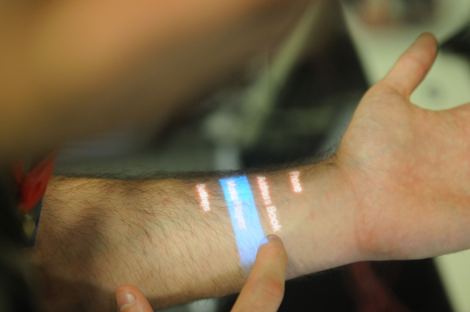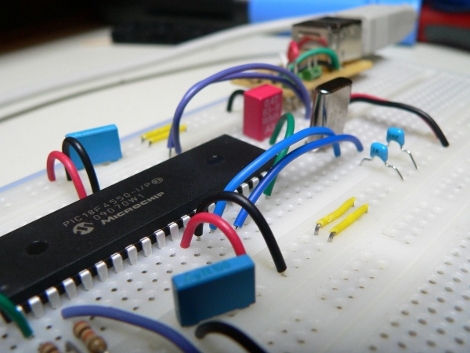This one could be a game changer. [Chris Harrison] and a team of researchers are showing off a method of using your arm as an input device. An arm band worn by the user picks up acoustic signatures created by tapping on your arm with the other hand, or taping your fingers and thumb together on the same hand. They’re achieving accuracies in the 82-97% range but it gets even better. Take a look at the video after the break and see what they’ve done by adding a pico-projector to the arm band in order to use your arm or hand as a touch display.
We liked seeing the concept mice from October, but the future of input devices might already be attached at the elbow.















